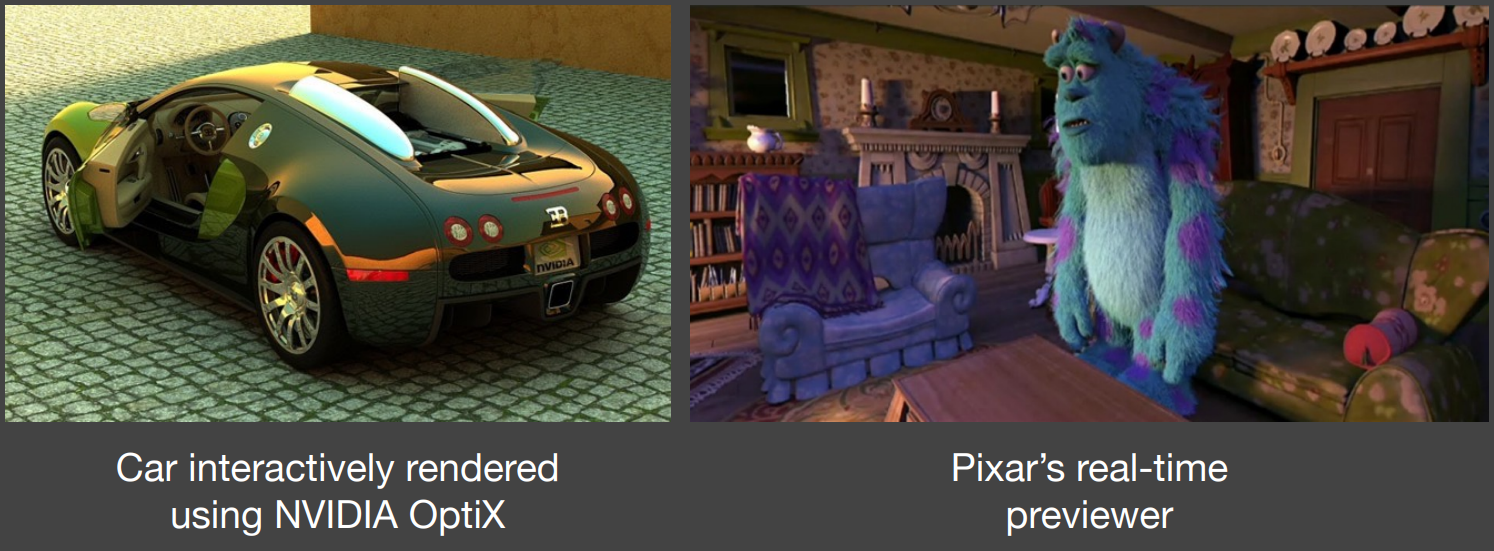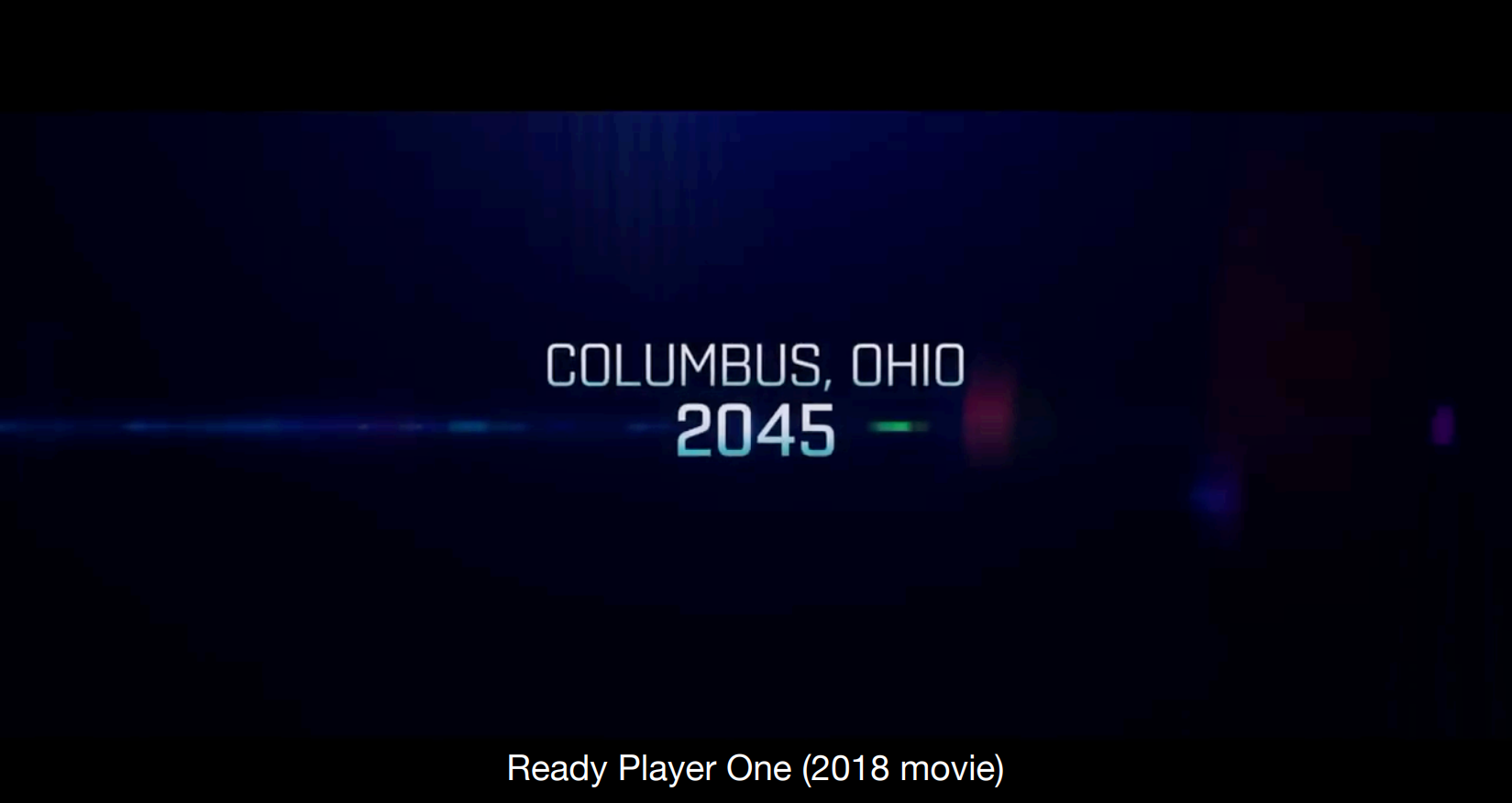GAMES202 Lecture 01 - Introduction and Overview
GAMES202 Lecture 01 (ucsb.edu)
I. Overview
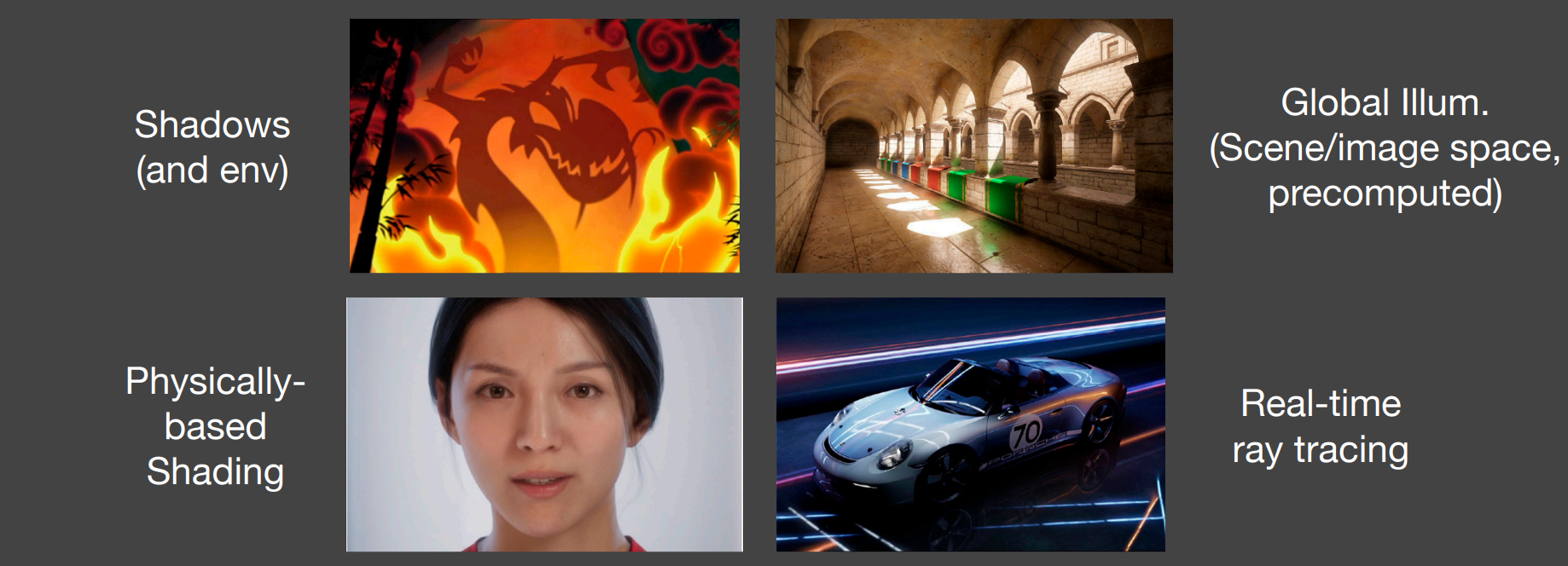
What is GAMES202 about?
A course at intermediate level: connecting basic knowledge and research
Real-Time High Quality Rendering
Speed: More than 30 FPS, for VR/AR 90 FPS or above
Interactivity: Each frame generated on the fly
Real-Time High Quality Rendering
Realism: Advanced approaches to make rendering more realistic
Dependability: All-time correctness (exact or approximate), no tolerance to (uncontrollable) failures
Requirement: No artifacts.
Real-Time High Quality Rendering
What is rendering? Calculating light which human eyes perceive
3D Scene -> Image
The topics are diverse: The course will be organized by topics.
Course Topics
4 Different Parts on Real-Time Rendering:
Shadow and Environment Mapping
Interactive Global Illumination Techniques
Physically Based Shading
Real-Time Ray Tracing
Topics:
Shadow and Environment Mapping
Interactive Global Illumination Techniques
Precomputed Radiance Transfer
Real-Time Ray Tracing
Participating Media Rendering, Image Space Effects, etc.
Single scattering, image space reflection
Non-Photorealistic Rendering
Genshin Impact, the Legend of Zelda
Antialiasing and Supersampling
TAA, DLSS
Chatting about tech and games
What is GAMES202 NOT about?
Generally speaking, not about a specific engine or API, and not quite about offline rendering.
3D modeling or game development, or specific API
Using OpenGL
But when finishing assignments, basic knowledge of OpenGL is required.
Shader Language is important! GLSL, for example.
Expensive light transport techniques
Neural Rendering (Why?)
Not high-quality: cannot do cheery-picking (as of when the course is being conducted)
Cannot be real-time: computational cost too high
Specific optimization and high performance computing
Purely technical.
How to study GAMES202?
Understand the different between science and technology
Science: knowledge
Technology: Implementing & Engineering. Requires skills that turn science knowledge into products
Real-time rendering:
fast & approximate offline rendering + systematic engineering
Fact:
in real-time rendering technologies, the industry is way ahead of the academia.
Practice makes perfect.
II. Motivation, Evolution and Milestones
Motivation - Why Study GAMES202?
Computer Graphics is AWESOME!
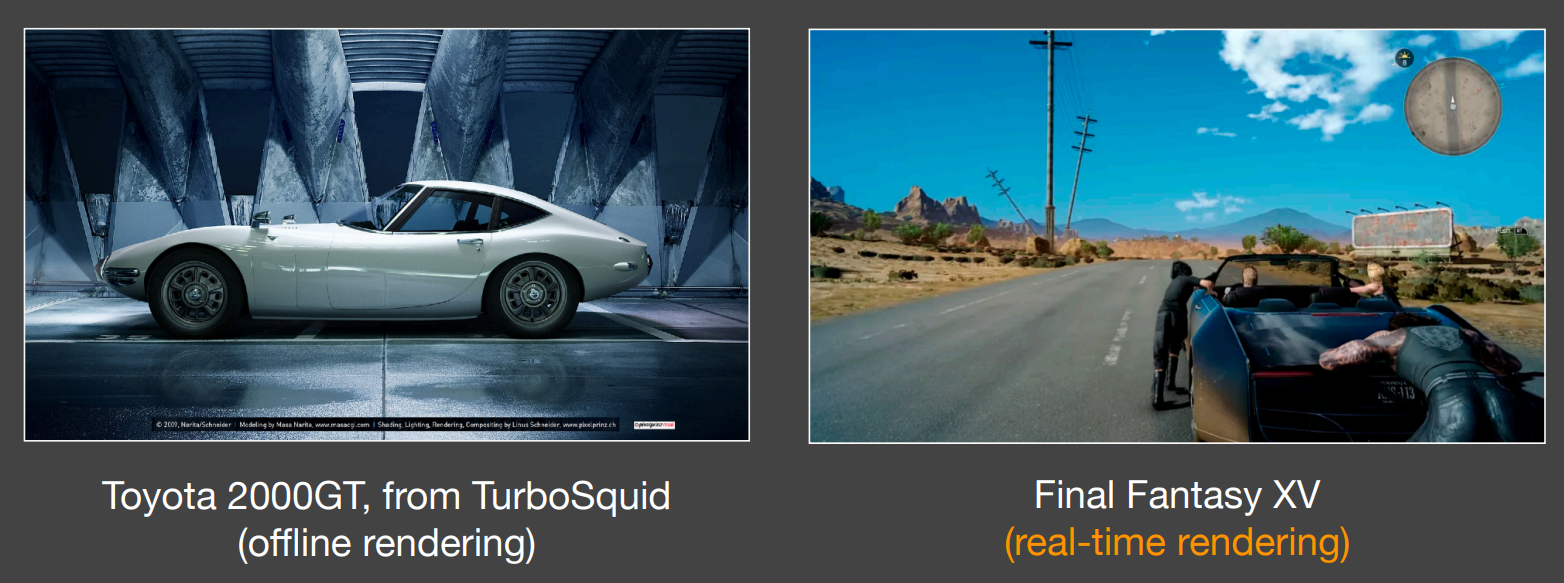
As of now, current CG algorithms are able to generate photorealistic images
Complex geometry, lighting, materials, shadows, ...
Computer-generated movies/special effects (difficult or impossible to tell real from rendered)
But accurate algorithms (esp. ray tracing) are very slow:
Therefore, the phrase offline rendering
Rendering 1 frame in Zootopia can take up to 10,000 CPU core hours
Proper approximations can lead to plausible results but run much faster
Evolution of Real-Time Rendering
Interactive 3D graphics pipeline as in OpenGL
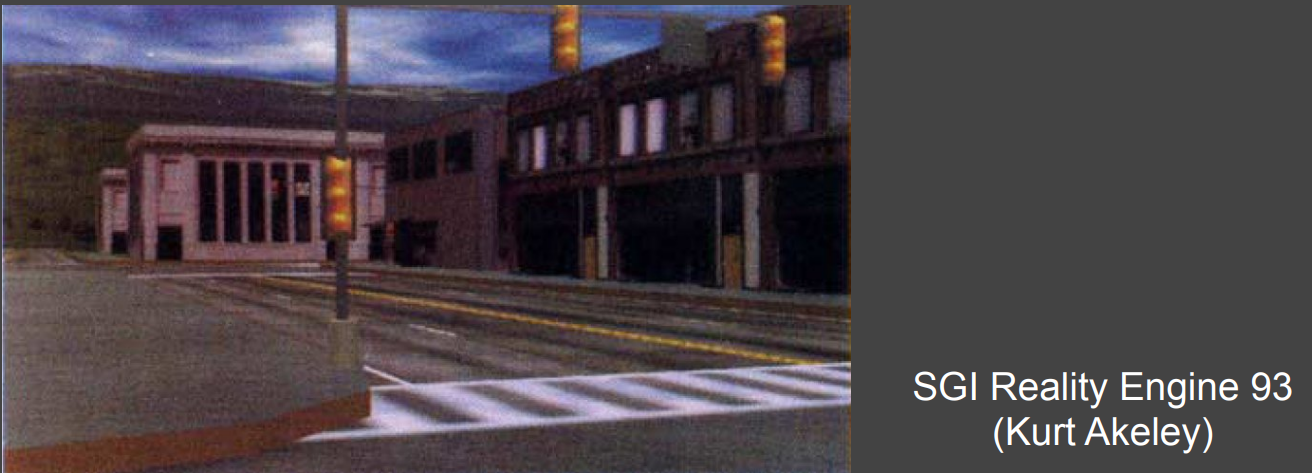
Earliest SGI machines (Clark 82) to today
Most of focus on more geometry, texture mapping
Some tweaks for realism (shadow mapping, accum. buffer)
20 years ago - Into the Game Industry
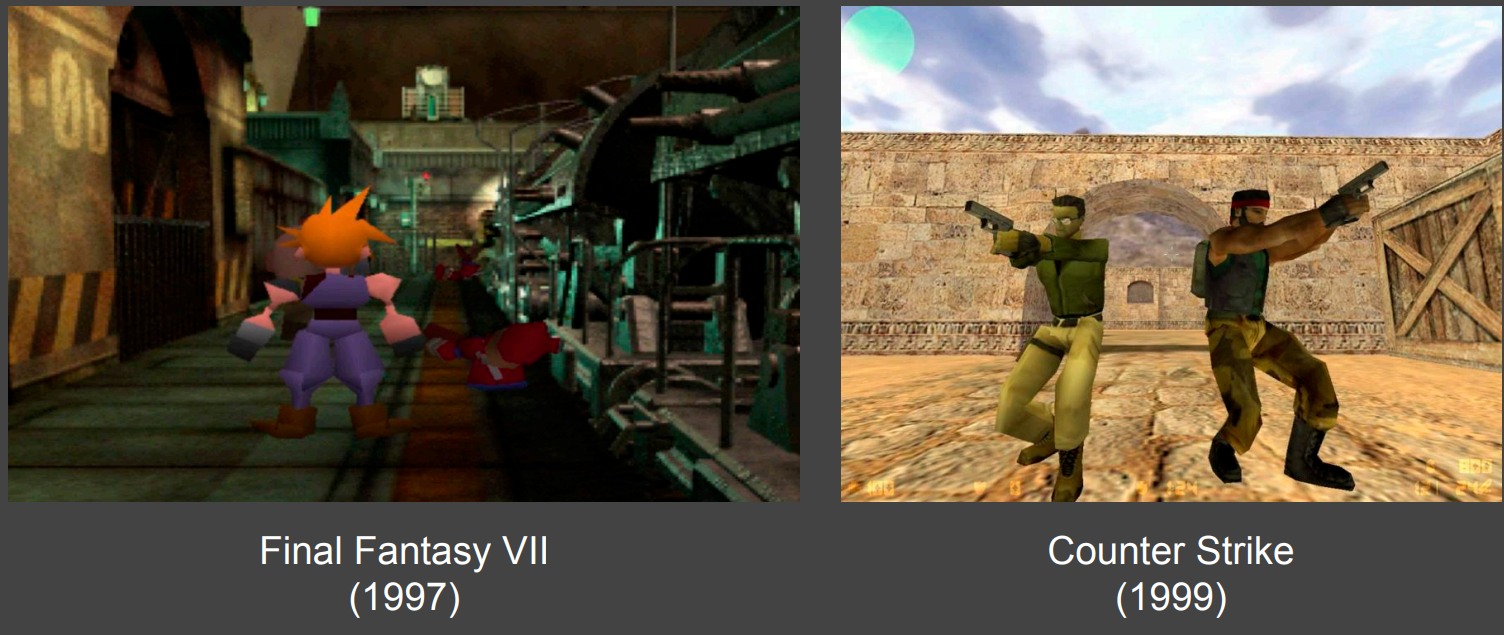
Interactive 3D geometry with simple texture mapping, fake shadows (OpenGL, DirectX)
10~20 years ago - Programmable Shaders

A giant leap since the emergence of programmable shaders
Complex environment lighting, real materials (velvet, satin, paints), soft shadows
Today
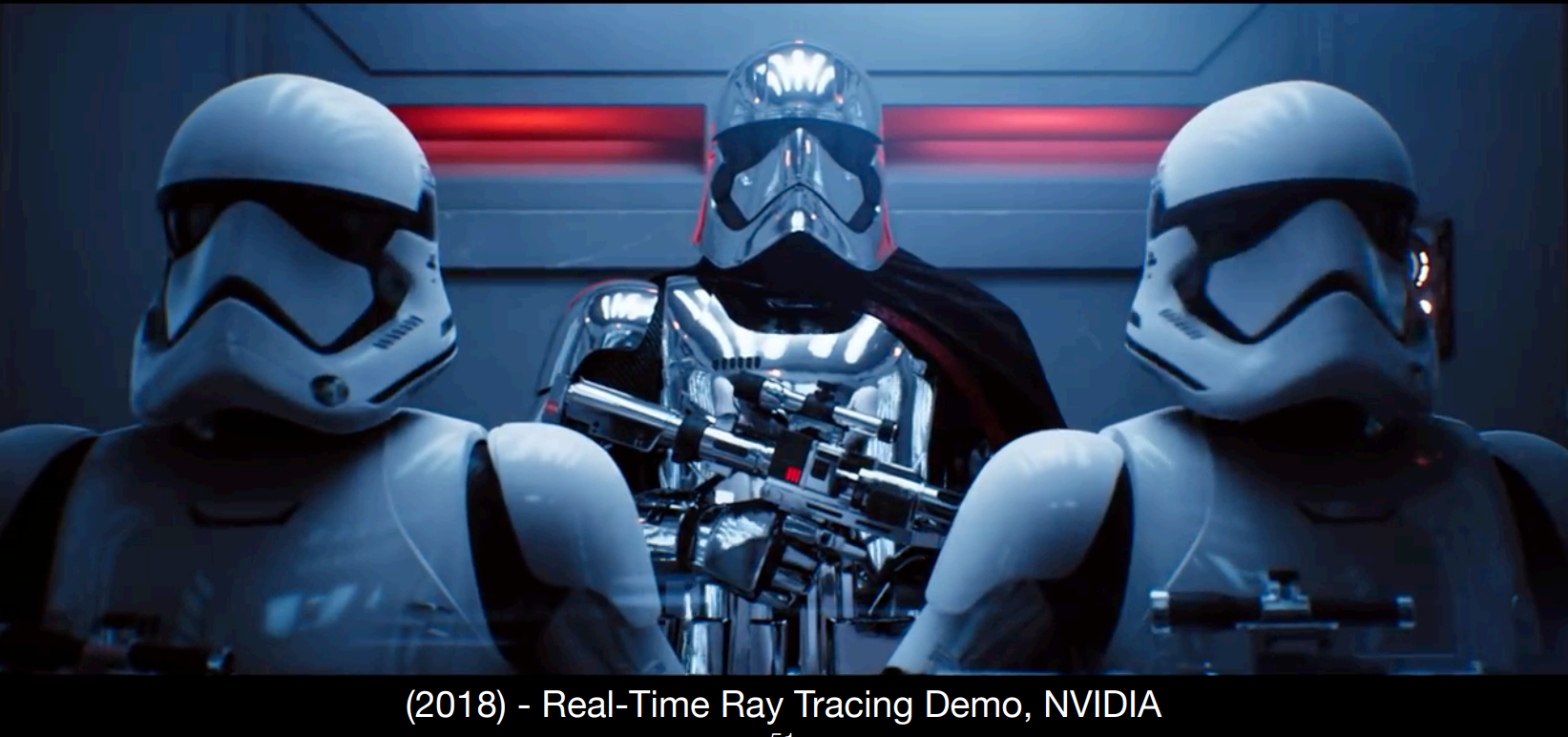
Stunning graphics, extended to VR and even movies
In the future
Technological and Algorithmic Milestones
Programmable graphics hardware (shader) (20 years ago)
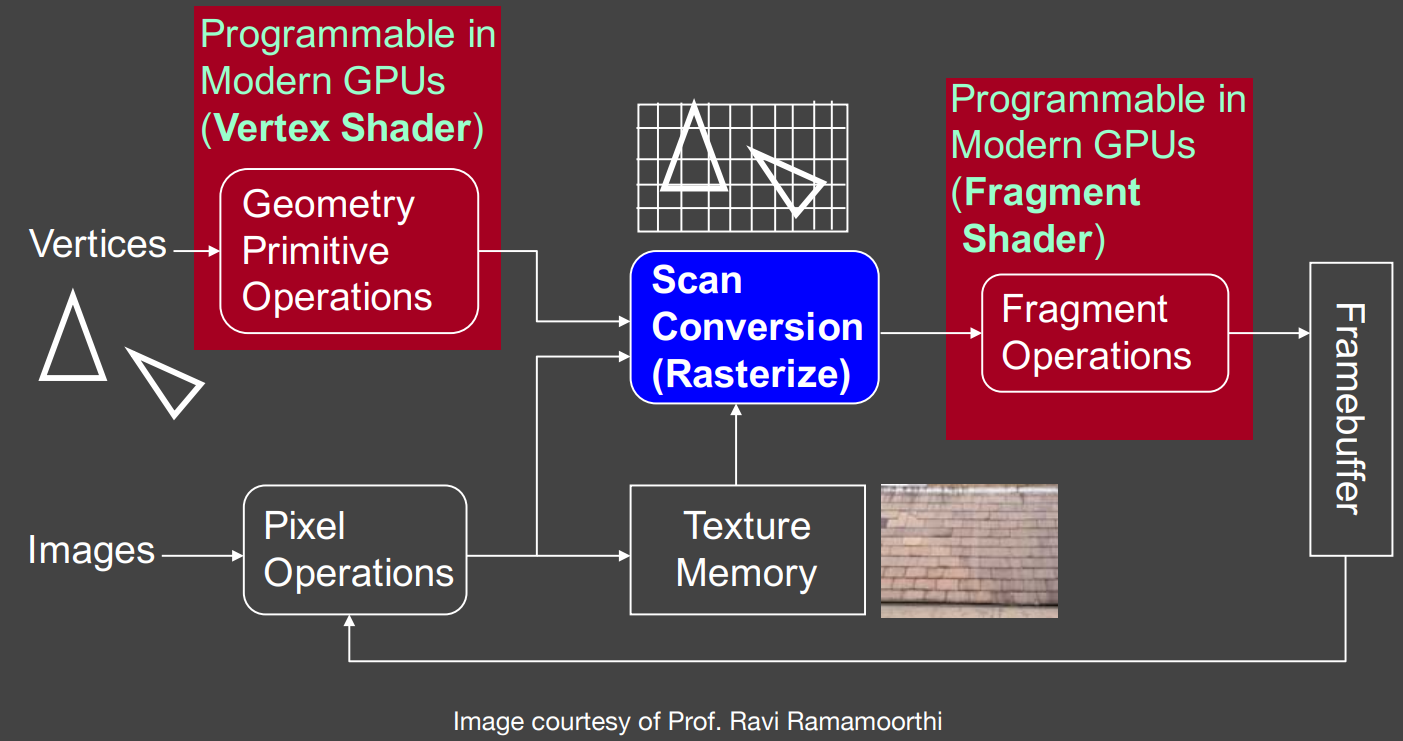
Compute Shader
Precomputation-based methods (15 years ago)
Complex visual effects are (partially) pre-computed
Minimum rendering cost at runtime
Relighting
Fix geometry
Fix viewpoint
Dynamically change lighting
Interactive Ray Tracing (8~10 years ago: CUDA + OptiX)
Hardware development allows ray tracing on GPUs at low sampling rates (~1 samples per pixel (SPP))
Followed by post-processing to denoise
